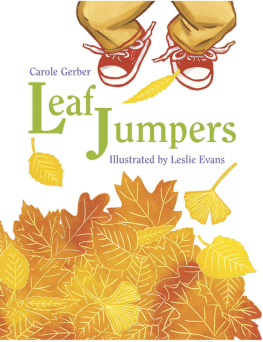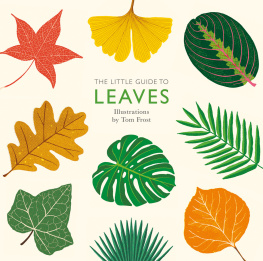Contents
List of Figures
Guide
Pagebreaks of the print version

The author and publisher have provided this e-book to you for your personal use only. You may not make this e-book publicly available in any way. Copyright infringement is against the law. If you believe the copy of this e-book you are reading infringes on the authors copyright, please notify the publisher at: us.macmillanusa.com/piracy.
This little book was first written at the beginning of the twentieth century as the world was enduring one brutal war and careening, unknowingly, toward a second. Though the circumstances are vastly different, we find ourselves living through a period of uncertainty and instability that echoes the atmosphere the Highland Seer writes about in the following pages. Today, many people have found themselves looking for answers in places they might have overlooked beforein a deck of tarot cards, in the glint of distant stars, or perhaps in a humble cup of tea. As the Seer notes, during uncertain times we look to new methods in the hope that some glimmer of light might brighten the darkness and obscurity of the future.
In the face of global strife, whether then or now, reading tea leaves is a quiet, personal practice. This is a fortune-telling tradition that belonged firmly to women. Mothers, sisters, friends, and daughters murmuring together in shared moments, over cups of tea. Dispensing wisdom and seeking advice, commiserating and ranting, celebrating and mourning. And in the midst of a quiet life unfolding in extraordinary times, these women could catch glimpses of the futures they would build in the dregs of their tea.
Reading tea leaves is a practice you can approach however you wish, as a divinatory method, as a gentle way to invite reflection and intuition into your life, or simply as a fun game after the perfect cup of tea. Whatever you choose, brew yourself a fresh cup, settle in, and enjoy Reading Tea Leaves.
If youre reading these words, youve opened a window into the past, and a door to the future. You chose this book, and in doing so, you have set your foot upon the intuitives path. You may have always known you possessed the gift, or you may be just realizing it now. In either case, your intuition has connected the dots, and you are on your way to strengthening your abilities. We each felt that calling, too, and we believe this knowledge has found its way into the hands of the right people for more than a century.
Leanne writes: Shortly after the release of Reading the Leaves, I had the opportunity to take a shopping adventure at a used bookstore. I believed I had discovered every book available on tea leaf reading until I cameacross a true gem I had never seen in my local shops. It was a copy of Reading Tea Leaves by the Highland Seer. Originally published at the beginning of the twentieth century and hailed as the first book to explore tea leaf reading in the English language, this copy was well worn, a bit shabbyand out of print! I was thrilled to get my hands on this classic that so masterfully covered my favorite form of divination: tea leaf reading, and I immediately called Sandra to share the news of my find. She and I agreed that for its place in history, this book is a must-have reference for all students of tasseomancy (from the French word tasse, which means cup, and the Greek word mancy, which means divination).
The mysterious author, credited only as the Highland Seer, clearly shared our view that tea leaf reading is a valuable art of personal divination. Tea leaf reading puts the power of divination into the hands of anyone looking to empower themselves and direct their future. The book contains easy-to-follow instructions for readers to begin practicing the art of tea leaf reading. One of the most important components is a comprehensive list of commonly seen symbols and their traditional meanings; it is oddly comforting to see that people of that time had many of the same concerns we have today, and many of the shapes and their meanings have not changed through the years.
The universe has been nudging us to ask questions from the beginning of time. Nature provides many tools to gain insight, and cultures all over the world have developed and shared these practices through the ages. In Europe, the practice of looking for symbols and images in everyday residues dates to medieval times, when practitioners would melt lead or wax to interpret someones fate. Even wine sediments and coffee grinds have been consulted, but the queen of all these substances is still tea.
Steeped in enchantment, history, and wonder, tea itself is the subject of myth and legend. According to Chinese lore, tea was discovered almost five thousand years ago. Emperor Shen Nung was resting under a tree when a leaf dropped into his bowl of hot water, and the lovely aroma of the steam enticed him to take a sip. Thus tea as a drink was born. Today, tea is one of the most popular drinks consumed in the world, second only to water.
Mythology aside, anthropologists contend that the tea trees that grow along the lush forested mountains of Yunnan province in China, in Assam in India, in Myanmar (formerly Burma), Laos, Vietnam, and Thailand are descended from the primordial groves where tea originated. From all evidence, tea drinking began here, then spread throughout Asia, making its way from the Far East to the West. Eventually, it became a staple in Scotland.
As for using tea as a means of divination, that can be traced back to the Chinese Ming dynasty (13681644 CE), and the advent of the gaiwan, a fine porcelain cup suited to the practice of tea leaf reading. The walls of this style of cup fit the recommendations of the Highland Seer, and it is surely the ancestor of the cups the Scots were using by the 1800s when this book was first written: pale and slightly flared, which allows the leaves to cling to them, easily forming dark shapes that would stand out. In the United Kingdom during this time, known as the Victorian Era, the art of tea leaf reading became popular as a method of seeing into the future. The Victorians referred to tea leaf readings as throwing cups.
It is no surprise that the Victorian Era ushered in an interest in tea leaf reading and divination. This time in history was filled with grief and fear. Even as finely decorated teahouses began popping up all over the country, the world was consumed with plague, and all classes of people wondered what their future would hold. The Victorians could not hide from death. Children often didnt survive past the age of five. Measles, smallpox, whooping cough, and scarlet fever killed the young by the hundreds in many communities. Sicknesses like pneumonia and tuberculosis were common causes of death, and no one was completely safe from their reach.
Today, again we find ourselves wondering what tomorrow will bring. Many people fear the future. Its no surprise to us to find tea leaf reading regaining its popularity in this unsettled global climate. There have been more metaphysical shops and events popping up that advertise tea leaf readings, both in person and online. Near our home base of Salem, Massachusetts, Bostons Tremont Tearoomopened in 1936still offers clients wisdom and guidance from information gathered by looking at tea leaves. We have been hosting our own Psychic Tea events in the Commonwealth since 2007, helping our clients get in touch with their intuitive gifts to not only find answers to their questions and concerns but connect them with their loved ones who have passed into spirit. When tea is used as a tool to plan and embrace the future, it heals the soul.










